I dove Yap Caverns at the southern tip of Yap, rifts and boulders with huge bumphead parrot fish. Looking up through the rocks at cathedral shafts of light, great fish above me. Saw a memorable nudibranch, a flat sea slug the length of my thumb, iridescent creamy white, with an orange band around his undulating edge. No eyes, instead two white antenna in front, and a bizarre mini-grove of tree-branched antennae in back. These are his gills.
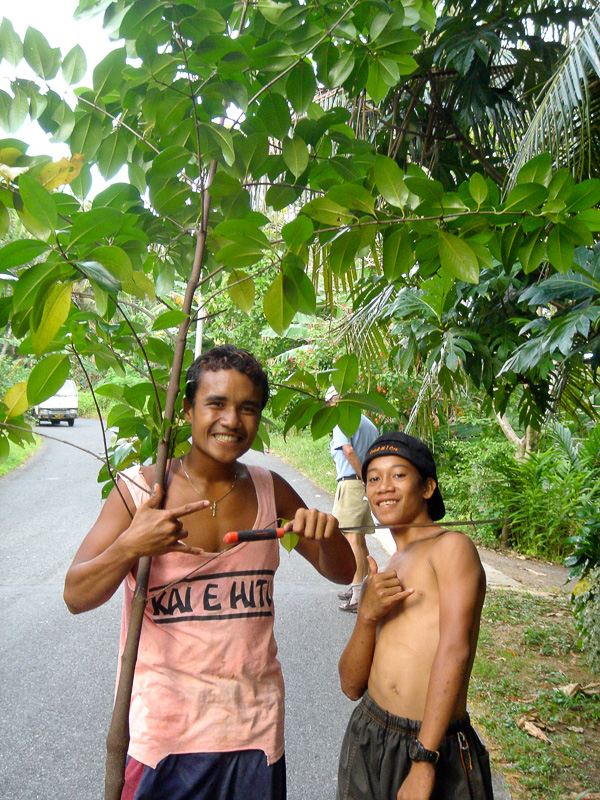
A good model for an alien, as I explained to my two guffawing Yapese guides Gordon and Kintu, having told them that I'm a science fiction writer. [The photo above actually shows two other guys, on the island Pohnpei.] Kintu was sweet, a bit shy, he's from an “out island” called Satawal, at the far east end of the Yapese archipelago, population 500, no airstrip and it takes three days to a week to get there by ship from Yap, depending how many stops the ship makes. Gordon fat and talkative. Gordon wanted to know if UFOs were real or not; he'd seen a couple of episodes of X Files. We agreed that diving is as alien and spacy an experience as one could as for. I saw great clouds of orange fish on the dive, schools of jacks the size of my arm, a shark the size of my daughter, a giant turtle, a carpet-like sea anemone with a father clown fish guarding baby clown fish like tiny specks. The others had all gone to try (successfully) to see the manta again, and the only divers on this southern-most tip of the Yap reef were me, Gordon and Kintu.

The last day, Embry and I rented a car and drove around the island. We went first to the village of Kaday, a bit hard to find our way, as there are so few road markings, the guide book directions were a bit out of date, and only the vaguest maps are available in Yap. But we did find it, and walked into the village along one of the ancient Yapese raised stone paths. Slippery hard rock, wending among patches of taro, palm trees, cassava, bananas, creeks and ponds. The food crops weren't in tidy rows or anything, just patches of them mixed in with the jungle plants. We saw lizards, frogs, land crabs, a bird with a red back, butterflies, a yellow-and-green grasshopper the size of my middle finger, and a black-white-black striped boar with tusks and a long long snout, tied up by a rag knotted around one foot, poor thing. He looked so intelligent and so doomed. The taste of wub.
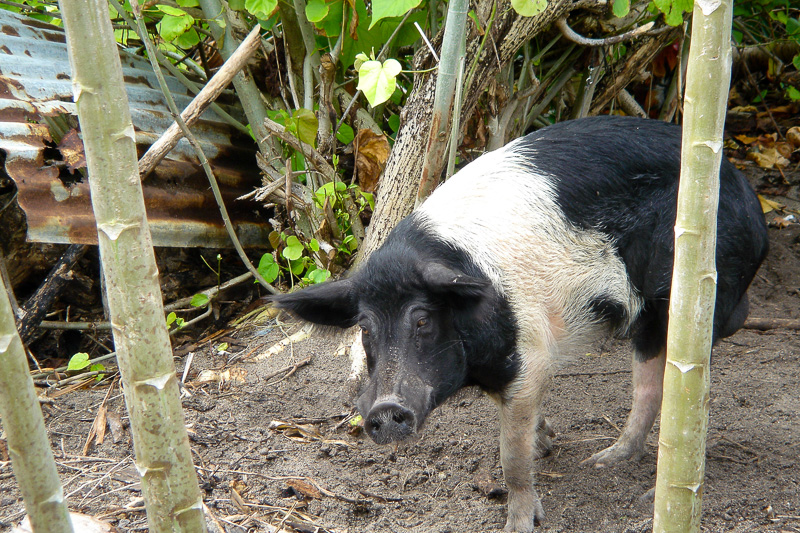
The dwellings were shacks of corrugated iron, many of them open on two or three or four sides, like pavilions, primarily for keeping off the rain. The temperature is always eighty degrees. In a city we're so hard and pulled-together, in these villages the dwellings seem just on the point of deliquescing back into organic natural life. The path through the village was covered with ground-hugging grass like you see on golf courses. A row of stone money beneath swaying betel nut trees. For some reason the village was deserted.
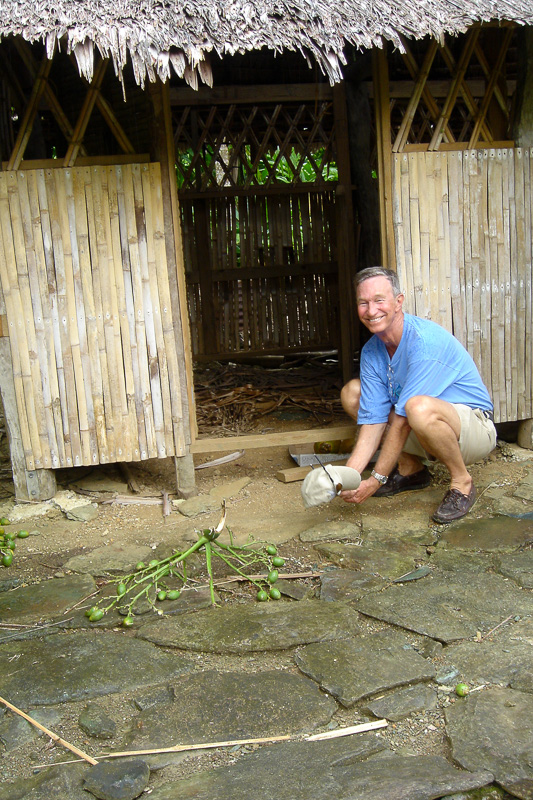
Embry and I walked to a river and sat there, wondering at the silence, the beauty. Then one of those brief showers of rain struck and we took shelter under the eaves of the men's house, a thatched hut at the middle of the village. There some betel nut fronds on the ground, with all but the tougher, larger nuts gone. The ancient rounds of stone money in front of us. A shared moment to remember, which is, after all, in large measure what we're questing for in this trip, my brother and I.
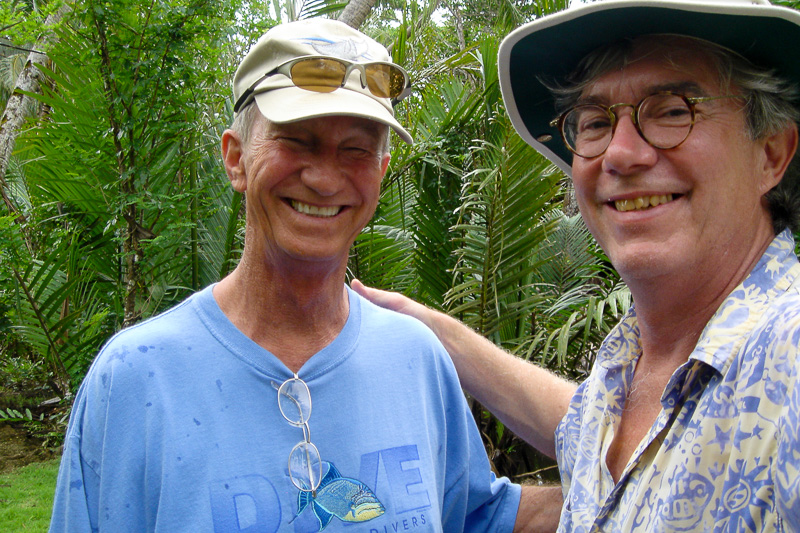
Later we were looking for the wreck of a WWII Japanese bomber supposedly near the airstrip, and asked some guys doing road construction, and they said, “We don't know, we are out islanders.” There's a real class distinction between the Yapese from the main island group of Wa'ab (pronounced simply “Wob”), and the out islanders. Funny to us mainlanders, who'd already think of Yap as being about as out-of-the-loop as you could get, that there are people even more out of it than the Wa'ab Yapese.
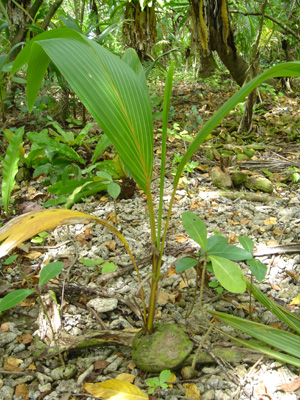
A couple of times we saw older women walking around bare breasted in grass skirts, as casually as bare-chested men in shorts. And everyone carries a little pandanus (a tree with a palmy kind of leaf that grows a hard pineapple-looking fruit that only the fruit bats eat) purse shaped like a miniature Macy's or Bloomingdale's shopping bag, with their stash of betel nut, lime, and cigarettes in the purse. I miss Yap already. Such peace.
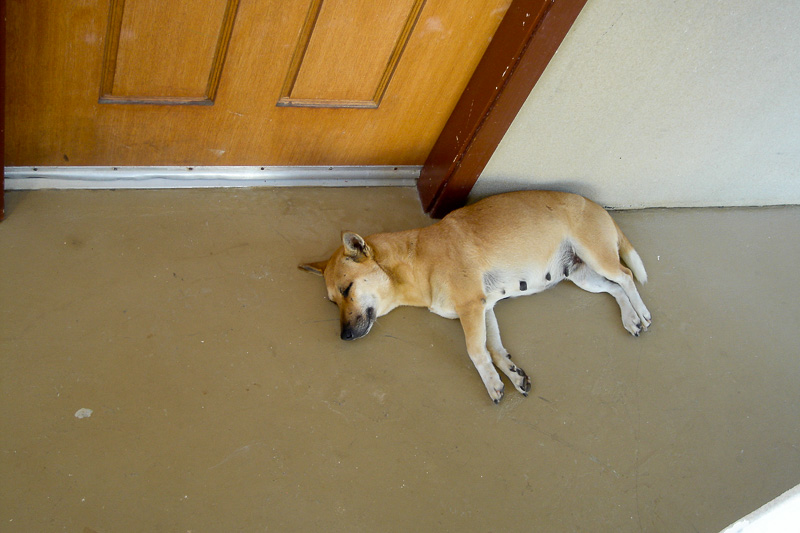









March 11th, 2005 at 4:05 pm
I love the last picture for all its symbolism. It makes me wonder what’s behind the door for Yap.
April 1st, 2005 at 3:50 am
I like the way u enjoy,And I like the dog 🙂 I’m Myanmar’s neighbor